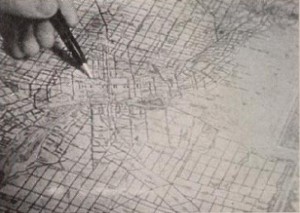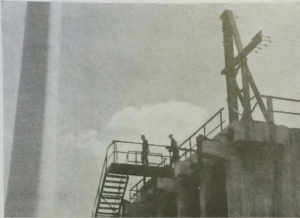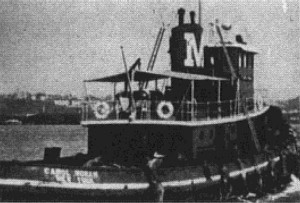"documentario"/documentary

"The cooperative plan of education of Antioch College is presented in Campus Frontiers, made by George Chuck Klein. The picture shows how, every ten weeks, half the undergraduates of Antioch exchange classrooms for jobs in offices, factories and hospitals. The frontiers of Antioch's campus are in the world of business, engineering and production. Mr. Klein, traveling over many States, pictured the work experiences of typical Antiochians and shows how their jobs integrate with their classroom studies. The film is an extraordinary record of American industry and science — high lights of the nation's work on a vast scale. Considering the varied lighting difficulties and the problems of organizing setups, Mr. Klein has made an extraordinary picture, the biggest known of its kind. The film is imaginative and clever, with a well planned theme that ties the diverse material together. Numerous cinematic effects are included, and the whole is accompanied by dramatic commentary, recorded on disc." Movie Makers, Dec. 1942, 507.
"Campus Smiles uses a playful tone to document the faculty, student body, and life at UW-Madison during the early 1920s. This documentary short is a compelling chronicle of the local culture at one of the nation’s largest universities and offers a glimpse into the undergraduate sphere of the immediate post-WWI era. In it, humorous intertitles penned in early twentieth-century American slang introduce campus personalities and comment on social events." Archive.org
"Film about canoeing, featuring members of the Charles Devenish Woodley family." Library and Archives Canada.
Film record of the third international canoe race over the St. Maurice River in 1936.
"documentario"/documentary
"documentario industriale"/industrial documentary

"documentario a fantasia"/avant-garde documentary
"Carbone, realizzato da Galeazzo Biadene con la collaborazione tecnica di Dino Jarach. E' un documentario industriale di una grande fabbrica di « Coke ». In questo film il regista si propone, a prescindere dallo spirito del contenuto necessariamente documentario, di mettere in atto problemi formali di stilistica cinematografica, frutto di esperienze teoriche, secondo i valori del cinema ortodosso. II film rivela tuttavia in qualche punto degli errori di ritmo, convulso e poco persuasivo. Il montaggio ha, nella colata del carbone, la parte più conveniente. Ottima la scelta del materiale plastico e il taglio delle inquadrature a cui si aggiunge una fotografia altrettanto felice. Il film è tutto a inquadrature fisse."
—Il ventuno 29 (Review of the G.U.F. of Venice), June 1935, p. 16
"Carbon (Carbone), made by Galeazzo Biadene with the technical collaboration of Dino Jarach. This is an industrial documentary about a large Coke factory. In this film, the director proposes, regardless of the spirit of the necessarily documentary content, to implement formal problems of film stylistics, the result of theoretical experience, according to the values of orthodox cinema. The film reveals, however, in some points some errors of rhythm, convulsive and not very persuasive. The editing plays its most suitable part in the sequence of the casting of the coal. The choice of plastic material is excellent, as is the size of the shots, to which is added an equally successful photography. The film is made up entirely of fixed shots."
—Il ventuno 29 (Review of the G.U.F. of Venice), June 1935, p. 16

"There are establishing scenes of the tugboat Carol Moran at dock in New York Harbor. We move aboard for an acquaintance with the captain. A call via radio comes from the dispatcher and very quickly the tug puts out for deep water. We are on the boat and live with the crew the experiences of a routine assignment, each of which must be just a little different. There are many things to see on these assignments and our cameraman has time for us to look. Carol has safely brought her mistress to dock; mission completed, Carol returns to her berth to await the next call. We have been part of a cycle of duty complete with the sounds attendant such a venture" PSA Journal, Nov. 1960, 39.
"Charles and Robert Coles showed a fine knowledge of the use of filters in their twin subject, 'Cascade and World's Fair.' Also they showed a grasp of composition and camera angles that was refreshing." American Cinematographer, Dec. 1933, 342.
Total Pages: 79